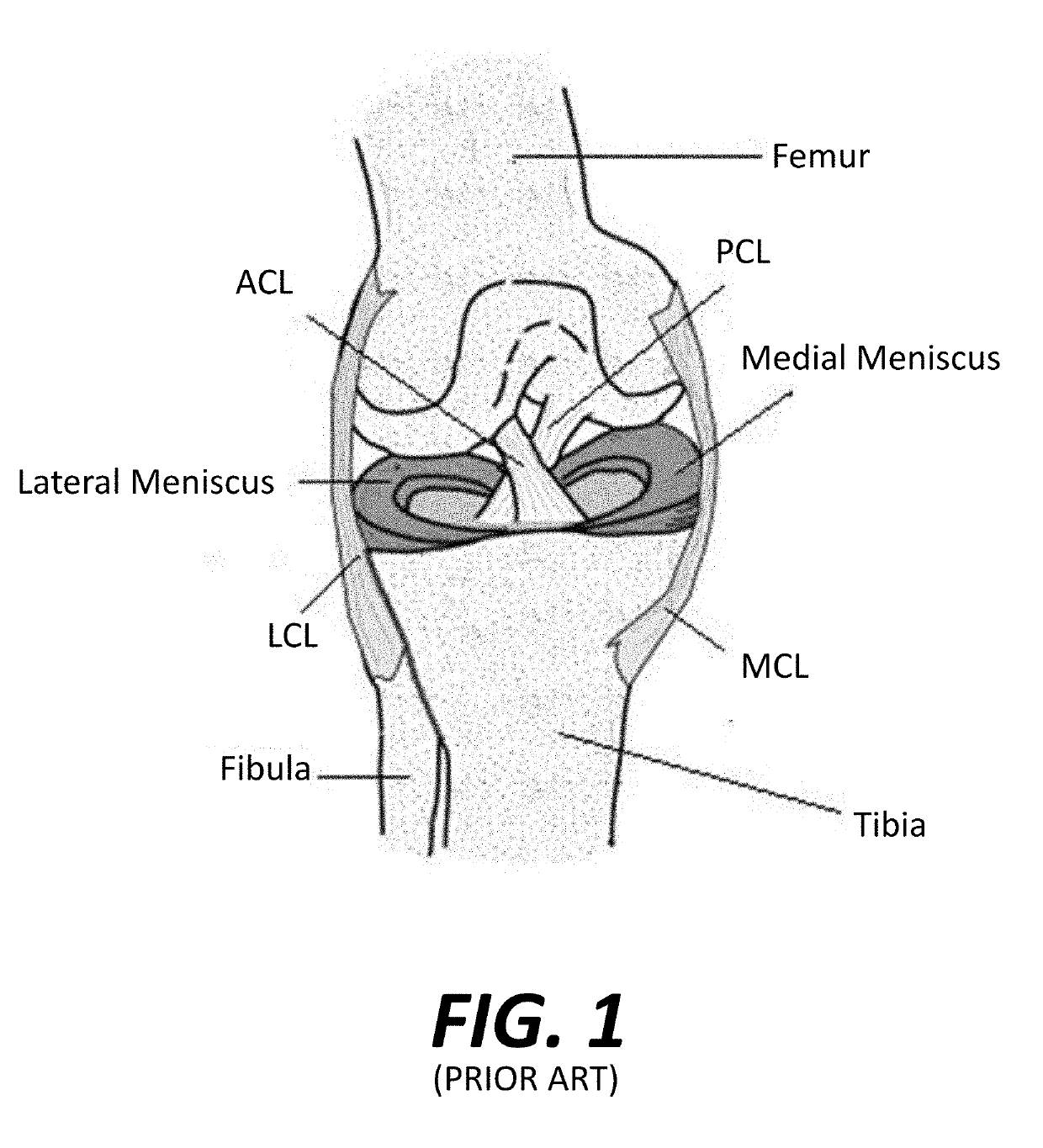Virtual Ligament Balancing
- Summary
- Abstract
- Description
- Claims
- Application Information
AI Technical Summary
Benefits of technology
Problems solved by technology
Method used
Image
Examples
Embodiment Construction
[0023]Body tissues, such as ligaments, tendons, muscles, and fibrocartilage, may affect how one body portion, such as a bone of a joint, interacts with another body portion, such as another bone of the joint. Generally, if a bone or a portion of a bone undergoes frequent loading, the density of the portion of the bone loaded may be generally greater than surrounding bone that undergoes less loading.
[0024]FIG. 1 is a highly simplified illustration of a typical right knee joint of a patient. The medial and lateral condyles of the distal femur articulate with respect to the medial and lateral condyles of the tibia, respectively. The articulation of the femur against the tibia is facilitated by cartilaginous tissue including the medial meniscus, which is attached the medial condyle of the tibia, and the lateral meniscus, which is attached to the lateral condyle of the tibia.
[0025]Still referring to FIG. 1, the knee joint is stabilized, in part, by four main ligaments. The anterior cruci...
PUM
 Login to View More
Login to View More Abstract
Description
Claims
Application Information
 Login to View More
Login to View More - R&D
- Intellectual Property
- Life Sciences
- Materials
- Tech Scout
- Unparalleled Data Quality
- Higher Quality Content
- 60% Fewer Hallucinations
Browse by: Latest US Patents, China's latest patents, Technical Efficacy Thesaurus, Application Domain, Technology Topic, Popular Technical Reports.
© 2025 PatSnap. All rights reserved.Legal|Privacy policy|Modern Slavery Act Transparency Statement|Sitemap|About US| Contact US: help@patsnap.com



